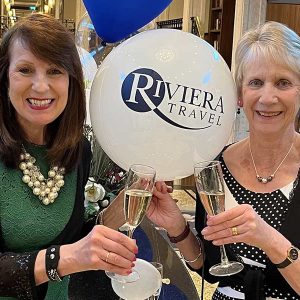A couple of brief excursions have lately taken me to Rutland and to Cambridge. And though the weather wasn’t brilliant – at this time of the year we didn’t expect it to be – the trips were thoroughly enjoyable and thoroughly rewarding.
I’ll tell you about Rutland first, though the village of Nassington isn’t in that tiny county, but in neighbouring Northamptonshire.
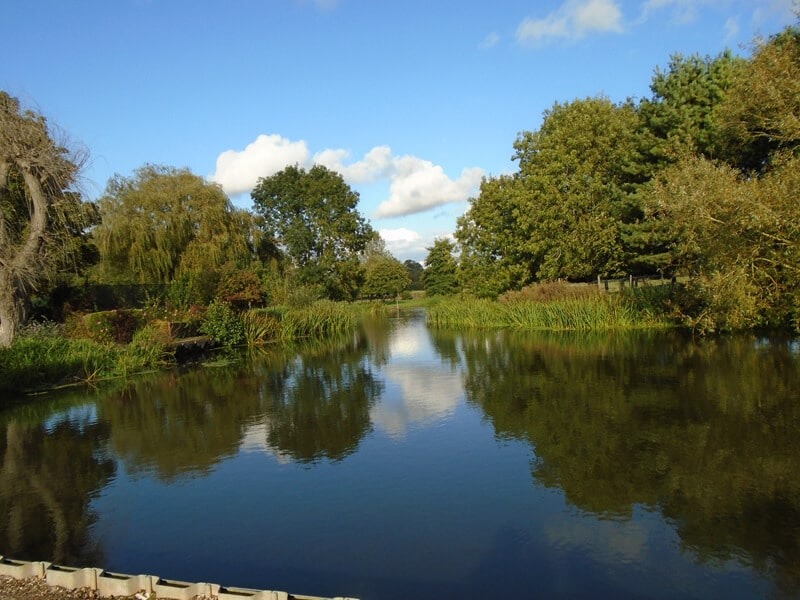 Nassington was our base for the trip. More specifically the Queen’s Head, a long-established pub with accommodation on land which lies between the main building and the river Nene.
Nassington was our base for the trip. More specifically the Queen’s Head, a long-established pub with accommodation on land which lies between the main building and the river Nene.
That accommodation was modern and functional, providing a comfortable bed, adequate wardrobe space and a large flat-screen television, with a small bathroom besides. We took our evening meals in the pub’s restaurant, and very good they were, too.
I’d not hesitate to recommend the Queen’s Head, though I feel the bedrooms (at least mine) are probably due for a makeover and some general smartening up.
But enough of Nassington for the moment. Let me tell you about Oakham, where we headed in hope of making discoveries. Many years have passed since I stayed there (in a hotel which now provides accommodation for the elderly), so I was expecting some changes.
Apart from the aforementioned hotel, there seemed to be none. The buildings of the old (1584) public school remain serene, All Saints church impressive.
We went to the Castle, as I had told Carole about its collection of horseshoes, and she wanted proof that this was not another of my dubious stories. Proof there was in abundance for more than 200 horseshoes deck the walls of the Great Hall – all that remains of the Norman castle.
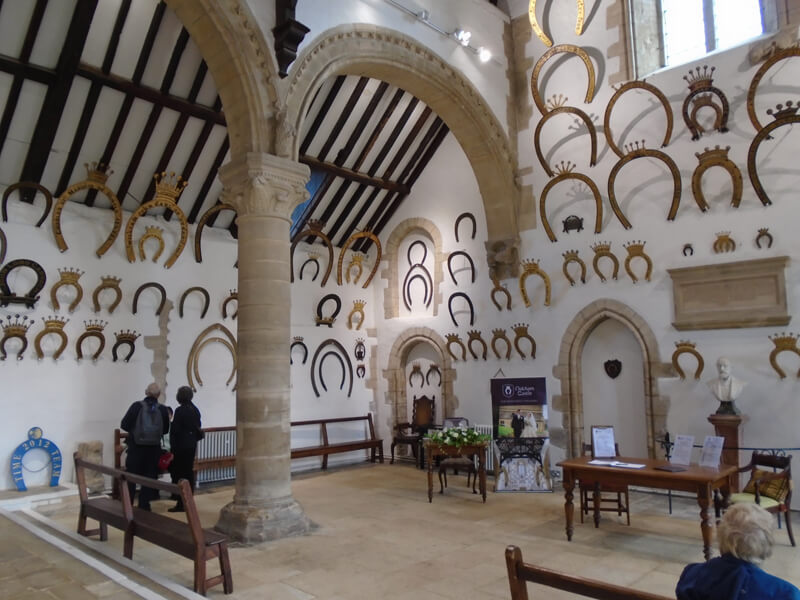 For centuries it has been the custom that Royalty and members of the peerage must present a horseshoe to the castle when passing through Rutland. Nobody is sure when it all started, though the oldest horseshoe dates from 1470. Most are ornate objects, designed to reflect the importance of the person who presented them.
For centuries it has been the custom that Royalty and members of the peerage must present a horseshoe to the castle when passing through Rutland. Nobody is sure when it all started, though the oldest horseshoe dates from 1470. Most are ornate objects, designed to reflect the importance of the person who presented them.
However, I did spot one proper horseshoe with a small coronet on top of it. Whoever donated that one must have had no doubts about his status.
I make a point of trying to discover something new about the places I visit, even if, as in the case of Oakham, I have visited them before and should know all I need to know. This time the (almost surreal) fact emerged that the signal box at Oakham railway station was the model for the Airfix kit version which lads (and their dads) construct and paint to enhance their Hornby railway layouts.
I also discovered that, in addition to a town in Germany, whose name escapes me, Oakham is ‘twinned’ with Dodgeville, Wisconsin, USA. A name which is likely to escape nobody.
And that, of course, led me to tell Carole about nearby Whitwell, a village on the north shore of Rutland Water, which is similarly ‘twinned’ with Paris.
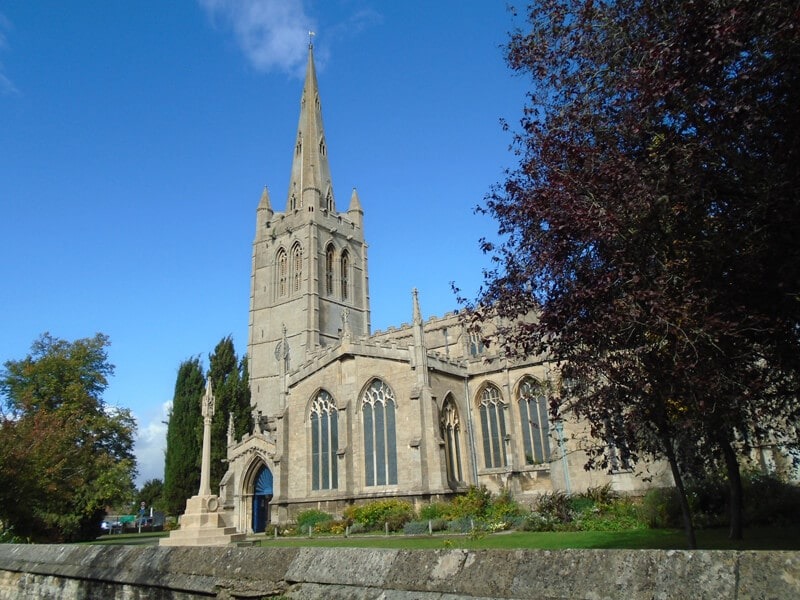 Now this is something that Paris doesn’t know about – or, if it does know, it chooses to deny. Paris is officially ‘twinned’ only with Rome, though it does have ‘agreements of friendship and co-operation’ with another 42 cities around the globe. London is on that list. But not Whitwell.
Now this is something that Paris doesn’t know about – or, if it does know, it chooses to deny. Paris is officially ‘twinned’ only with Rome, though it does have ‘agreements of friendship and co-operation’ with another 42 cities around the globe. London is on that list. But not Whitwell.
Nonetheless, if you take the A606 from Oakham to the A1, you will drive through Whitwell and see the signs on its outskirts confirming that Paris is its chosen twin.
The story goes that the regulars in one of the village pubs – either the Noel Arms or the White Horse – decided they’d like to be twinned with Paris and wrote a letter to that effect to the Mayor – at the time Jacques Chirac. Having had no response, they went ahead and put up a couple of wooden signs. These were eventually replaced by metal signs, erected by the County Council, which sort of adds credence to their claim, I think.
I’m going to save the Cambridge trip for another time, because I want to tell you about something really nice that happened to us on the day we arrived in Nassington.
Taking advantage of a sunny spell, we toddled off to explore the village and found a narrow pathway leading off the main street. It took us between a couple of houses and then between high hedges before we arrived at a broader grass track running more or less parallel to the main street.
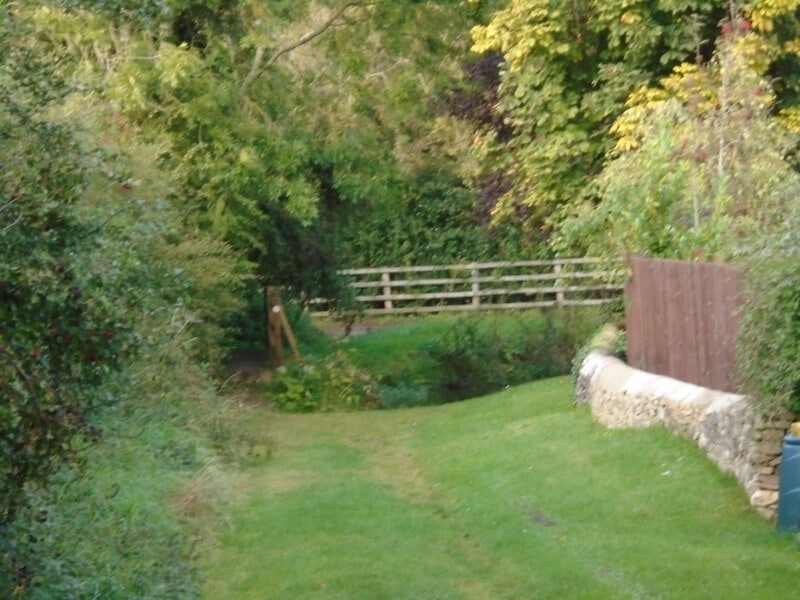 Its equally high hedges bore a tangle of brambles, heavy with blackberries, so we picked and ate some as we made our way towards a small stream. Then a young woman appeared, carrying a Tupperware box which she was filling with the fruit.
Its equally high hedges bore a tangle of brambles, heavy with blackberries, so we picked and ate some as we made our way towards a small stream. Then a young woman appeared, carrying a Tupperware box which she was filling with the fruit.
We stopped to talk. She told us she made jam from the blackberries, which grew conveniently close to where she lived. We told her we had just arrived for a short stay and were staying at the pub.
We spoke for no more than five or ten minutes, but that evening when we walked into the bar for a drink before dinner, the girl manning the pumps produced a jar of blackberry jam and handed it to Carole.
The young lady had left it for us as a gift. The girl at the bar had no idea who she was. Next day we knocked on a few doors, but had no luck finding her to express our thanks. But we left a ‘thank you’ card and my email address at the reception desk, just in case she happened to pop in again.
I do hope she does.




